Location of Everest base camp
Everest base camp (EBC) is located in the Khumbu region, lying at the latitude of 28.0043 and longitude of 86.8557, at an altitude of 5363 meters. It is not at the summit of Mount Everest but the starting point for climbers attempting to reach the summit and the ending point for the trekkers. It is on Mount Everest’s southern flank in Nepal.
Lukla Flight Information
Lukla is a small town and the starting point for all treks to the Everest region, Everest Base Camp Trek is also located in this region. It serves as a gateway with a small airstrip to Everest Trek, and there is no road access from Kathmandu to Lukla. Trekkers must either fly to Lukla or trek from Phaplu or Jiri. Regular flights to Lukla are operated by Tara Air, Summit Air, and Sita Air from Kathmandu or Ramechhap during the main trekking season.
Be prepared for potential delays or cancellations, as weather conditions can impact flights to and from Lukla. If flights are delayed or canceled, you may need to add a few extra days to your itinerary. We will do our best to adjust the itinerary as needed.
During peak trekking months—March, April, May, September, October, and November—flights to Lukla may operate from Ramechhap/Manthali due to Nepal's aviation rules aimed at avoiding congestion and air traffic delays. Ramechhap Airport is approximately 130 kilometers east of Kathmandu and requires a 3 to 5-hour drive from Kathmandu.
Regarding luggage, there is a weight limit of 15 kg per passenger, including your hand-carry bag. It is advisable to keep your luggage under this limit to avoid extra charges. In case of an overload, your bag may be transported on a subsequent flight.
If you do not have extra time before or after your trekking itinerary, you might consider taking a helicopter close to Lukla or shifting your trekking route to another region. Arranging for one or two additional days in your trip is highly recommended to accommodate potential flight delays or cancellations and to ensure you can board your pre-planned international flight.
All Flights operate from Ramechhap to Lukla
Nowadays, all the Lukla flights operate from Ramechhap in main Trekking months such as April, May, October and November. The reason is: Kathmandu airport is both International and domestic. In the main season of trekking, there will be many domestic and international flights operating which is more than capacities of Kathmandu airport. This means there will be delays to Lukla flights due to busy air traffic. If all flights are from Ramechaap to Lukla, there will be no issue of air traffic and flight duration is also less than from Kathmandu. Ramechhap airport is 144 kilometers away from Kathmandu; it takes 3/4 hours by vehicle. From Ramechhap it is easy to get in and get out to Lukla on time for trekking in the Everest Region.
Everest Base Camp Trek Difficulty
Everest Base Camp (EBC) Trek is considered to have a moderate difficulty level, requiring 5 to 8 hours of walking per day. The trail is well-maintained, with a mix of uphill and downhill terrain at progressively increasing altitudes.
This trek typically takes 12 days from Kathmandu to Kathmandu. Moderate fitness is required, but good health, physical fitness, and mental preparedness are highly recommended to ascend to 5,364 meters at Everest Base Camp and 5,545 meters at Kalapathar. Some experience in multi-day hiking or trekking is beneficial.
Starting at Lukla (2,800 meters) and trekking to Phakding, where you'll spend your first night at an altitude of 2,700 meters, the trek ascends to 5,364 meters at Everest Base Camp. From Namche to EBC, the trail becomes more challenging due to significant altitude gain and rugged terrain, but it is generally not extreme. Proper acclimatization days, such as staying two nights at Namche and two nights at Dingboche, help trekkers adjust to the elevation and minimize the risk of altitude sickness.
The trek to the base camp of the highest mountain in the world is definitely not simple. Some sections of the trail are relatively challenging, with steep slopes and rocky terrain in high-altitude areas. Certain parts of the trail between Dingboche and EBC can be prone to landslides and avalanches. Snowfall and rainfall can also make the trek more challenging due to the higher elevation, so it is important to prepare with proper seasonal equipment.
Having a guide and porter is highly recommended for successfully completing the EBC Trek without difficulties. A guide will provide valuable information and assistance, while a porter will carry your luggage, making your trip to EBC more enjoyable and hassle-free.
Acclimatization day to reduce the Altitude Sickness for EBC Trek
An acclimatization day is necessary during the Everest Base Camp Trek because it is located in high-altitude terrain, with EBC at 5,364 meters and Kalapathar at 5,545 meters. The trek starts at 2,800 meters in Lukla, and you gradually climb to 5,545 meters at Kalapathar, passing through several high-altitude places like Namche, Tengboche, Dingboche, Lobuche, and Gorakshep. As you ascend, oxygen levels and air pressure decrease compared to sea level. Once you reach an altitude above 3,000 meters, you may experience symptoms of altitude sickness, such as nausea, vomiting, diarrhea, headaches, loss of appetite, tiredness, dizziness, and sleeplessness.
So, Namche Bazaar and Dingboche are our acclimatization rest days in our itinerary. These rest days help prevent altitude sickness and allow you to adapt to the environment. If you experience any symptoms of altitude sickness during the Everest Base Camp Trek, it is important to address them immediately to avoid difficulties in completing the trek. To prevent these issues, you should follow your guide's instructions, as they are knowledgeable about high-altitude sickness.
When ascending on the Everest Base Camp Trek from Namche, be honest with your guide about how you are feeling. Your guide will advise you to walk slowly and may suggest that you sleep at a lower altitude before ascending further. This practice, known as acclimatization, helps reduce the risk of altitude sickness.
To prevent altitude sickness, you should follow the itinerary closely, as proper acclimatization helps your body adapt to higher elevations. Additionally, stay hydrated by drinking plenty of water, eat a well-balanced diet with sufficient carbohydrates, maintain a comfortable pace, and avoid alcohol and sedatives. By adhering to these guidelines, you can reduce the risk of altitude sickness and have a safer and more enjoyable trek on the Everest Base Camp. However, if you continue to feel unwell despite following these recommendations, you should return to a lower altitude.
Best Season for Everest Base Camp Trek
The best seasons for the Everest Base Camp (EBC) Trek are spring (March to May) and autumn (September to November). These seasons offer the most favorable weather conditions, stunning scenery, and excellent visibility for enjoying the breathtaking views of the Himalayas. They are also the best times for a safe and enjoyable trek to Everest Base Camp because of the clean air, and the absence of rain and snow compared to other trekking seasons.
In March, early spring brings still quite cold temperatures at higher altitudes. Snow may still be present on some passes, but temperatures begin to rise. Daytime temperatures are comfortable for trekking; however, nights can be cold, especially above 4,000 meters. April is considered the best month for the Everest Base Camp Trek because temperatures continue to warm up, days become longer, and rhododendrons and other flowers are in full bloom, adding vibrant colors to the trek. In May, the weather is warmer, and the trails become more accessible. Daytime temperatures can reach 20°C (68°F) or higher at lower elevations. The higher regions are more comfortable for trekking and climbing, though there is a higher chance of pre-monsoon showers towards the end of the month. May is also an excellent time for the Everest Base Camp Trek and other treks, making it a recommended period for all trekkers undertaking demanding routes in Nepal.
- Autumn (September to November)
September marks the beginning of the autumn season, so the monsoon season ends, leaving the trails lush and green. Early September may still experience some residual rain, but as the month progresses, the weather stabilizes. It is essential to prepare with rain gear for this month. However, visibility for views may sometimes be limited. October is the middle of autumn and is considered the best month for Everest Base Camp trekking in the Everest region. The weather is stable, the skies are clear, and temperatures are moderate. November is the end of the autumn season, so the weather remains clear and stable, but temperatures start to drop, especially in the latter half of the month. Nights can be quite cold, dropping below freezing at higher elevations. During this month, proper preparation for cold weather and an experienced trekking guide are essential for successfully completing the Everest Base Camp Trek.
Winter and summer season
If you wish to avoid crowds and enjoy some alone time with nature and culture, you can do this trip during the winter (January and February) and summer (June to August) but you may face some difficulties.
The extreme cold can make Everest Base Camp trekking difficult and uncomfortable. Proper gear, an experienced guide, a strong porter, and thorough preparation are essential. Heavy snowfall can make the routes more challenging and sometimes impassable. Some teahouses and lodges may be closed due to the cold and fewer trekkers, especially at higher altitudes. Winter is only recommended for those seeking a challenging adventure, as it offers a unique and demanding trekking experience.
The summer season is the rainy season in Nepal, making travel to and from Lukla difficult. Trails can be muddy and slippery, with landslides and falling rocks being more common in some areas. Visibility may be reduced due to frequent cloud cover and fog. The increased presence of leeches and insects is likely due to the wet conditions. Some teahouses and lodges along the Everest Base Camp trekking trail may be closed or offer limited services. However, this season is ideal for experiencing lush, green landscapes with fewer crowds and lower costs. It does involve dealing with heavy rain, mud, and reduced visibility, so an experienced guide and proper trekking gear are essential.
Accommodation during the EBC Trek
Due to the popularity of the Everest base camp trek, the accommodations are well managed with the availability of lots of accommodations and restaurants along the trekking trail. Therefore there will be less or no difficulty in finding the best accommodations along the Everest Base Camp route. The majority of the teahouses have the best quality service. Normally, lodges have private rooms (2 beds in one room) for customers with sharing an indoor bathroom.
Rooms typically have twin beds with clean bedding and blankets. In some places, you might find rooms with attached bathrooms, but shared bathrooms are more common. We highly recommend to trekkers that you should bring a sleeping bag for warmth and comfort especially at higher altitude.
If you need luxury accommodations, there are some luxury lodges with luxury facilities. Every different place has a different quality of the lodges and might become more basic as you gain altitude, so you can choose the best according to your budget.
Food during the EBC Trek
Every teahouse and lodges has a menu with nearly identical food items along the EBC trek, offering a variety of food options, including both local and international dishes. The cooks are essentially skilled, yet the meal may have a taste that differs from that of western cuisine. Because meat is scarce and not fresh in the mountains, we advise you to try vegetarian recipes.
Dal Bhat is a highly recommended meal during EBC trek because it is served with rice, lentil soup, vegetables, pickles, and Papad. They have many different dishes in the food menu like Burger, Pizza, MO Mo, Soups, potatoes items, Meat items, bakery items, fried items and many others.
Drinks:-
During the Everest Base Camp Trek, you'll find a variety of drink options available at the tea houses lodges and tea shops along the trail. Here are some common drink choices you can expect during Everest Base Camp Trek:
Hot Drinks:
- Tea: There are many different types of hot tea such as black tea, green tea, herbal tea, spiced tea (Nepali tea), Ginger tea, milk Tea are readily available. These hot teas provide warmth and comfort, especially in the colder altitudes.
- Coffee: Most of the lodges offer the coffee items but Instant coffee is normally available at tea houses during the Everest Base Camp Trek. While the quality might vary like milk and black, it's a warm and energizing option.
- Hot Chocolate: it is a delightful treat for those seeking a sweet and warm beverage.
- Ginger Lemon Honey Tea: This is a popular drink for its potential health benefits and soothing properties during the high altitude trekking.
- Bottled Water: Bottled water also is available at teahouses for purchase. It's necessary to stay hydrated, especially at higher altitudes, to prevent altitude sickness. Purchasing bottled water becomes more expensive as you ascend to higher altitudes, it’s a good idea to use a refillable water bottle and use water purification methods when refilling from local sources. Our team will provide guidance on the proper usage of water purification methods, ensuring your hydration needs are met responsibly and economically during the journey.
Cold Drinks
- Soft Drinks: Must of the teahouses offer canned or bottled soft drinks like cola, Pepsi, soda, and fruit juices. Availability will be limited at higher altitudes due to the logistics of transportation.
- Alcoholic Beverages: All teahouses offer a limited selection of alcoholic beverages like beer, rum vodka and local beverages like Tongba and Raksi. You should keep in mind that alcohol can dehydrate you and might have a more marked effect at higher altitudes.
Requires Permits & Permits Cost for the Trek
The Everest base Camp Trekking route is situated within the Sagarmatha National Park in the Khumbu Pasang Lhamu Rural Municipality in the Everest region of Nepal. Therefore, you need to purchase a Sagarmatha National Park entrance permit and a Khumbu Pasang Lhamu Rural Municipality entrance permit. Another required permit is the TIMS (Trekkers Information Management System) card, which is for your safety and security, as it helps keep track of trekkers' whereabouts in the region. Both permits are mandatory for the Everest Base Camp Trek.
These permits can be obtained from a reputable trekking company, the Tourism Board (Bhrikuti Mandap), Kathmandu. The Sagarmatha National Park entrance permit can be buy in Monjo and Khumbu Pasang Lhamu Rural Municipality entrance permit can be purchased in Lukla after starting the journey. You or your guide must carry these permits throughout the trek, as you will need to show them and register at every checkpoint along the trail. If you attempt to trek without these permits, you will need to purchase them on-site at double the cost (as a penalty) or you may be forced to turn back. Requiring permits are given below:-
Khumbu Pasang Lhamu Rural Municipality entrance permits
- Cost: US$ 30 per person, per trek for all foreigners
- Cost: US$ 20 per person for SAARC (South Asian Association for Regional Cooperation) citizens
TIMS (Trekkers Information Management System) Card:
- Cost: US$ 20 per person, per trek
Sagarmatha National Park Entrance Fees:
- Cost: US$ 30 per person, per trek for all foreigners
- Cost: US$ 15 per person for SAARC (South Asian Association for Regional Cooperation) citizens
Why EBC Trek with Us?
If you are looking for an amazing trekking experience during the Everest Base Camp trek, you need to choose High Pass Adventure Trekking because there are various benefits of EBC trek with High Pass Adventure Trekking.
We provide a lot of differences then other companies in terms of quality, convenience, friendship, and above all the safety and security of our customers.
Our extensive experience and genuine dedication to the trekking industry ensure that your holiday is well planned and executed to make the most magnificent journey of your life.
We also offer a flexible itinerary and tailor-made itinerary and affordable cost with high quality of service. Our guides are knowledgeable about region, language, the first aid kits and we recruit strong and liable porters to carry the luggage. After completing the Everest Base Camp Trek, you can feel a memorable, achievement and stress free journey in life.
Luggage Load Carried by Porters during the Trek
If you are doing Everest Base Camp Trek with just a guide, it will be a cheaper journey, but the guide will not carry your luggage because they are professionals and have their own luggage to carry. In this case, you can hire a porter-cum-guide who handles both guiding and carrying your luggage, typically about 10 to 12 kg.
If you are in a group, we usually assign one porter for every two trekkers, so each trekker's luggage should weigh around 10 kg. If you hire a Porter, a porter typically carries 20 to 25 kg during the trek in Nepal. Trekking with both a guide and a porter highly recommended because they makes walking easier and gives you more free time to enjoy the trekking and climbing, resulting in a memorable trekking experience in Nepal during the Everest Base Camp Trekking.
Important note for the EBC Trek:
Certainly, trekking to Everest Base Camp is a challenging and rewarding adventure. So there are some important notes and considerations for anyone planning to do the EBC trek. The EBC trek involves long days of hiking at high altitudes, often with steep ascents and descents. It's essential to be in good physical fitness and pre-trek training regimen to build endurance and strength.
Acute Mountain Sickness (AMS) will be a significant concern. It's necessary to acclimatize and ascend gradually to acclimatize to higher altitudes. Prepare a comprehensive packing list, including warm clothing, a good-quality down jacket, sturdy hiking boots, rain gear, and a quality sleeping bag rated for cold temperatures.
The weather in the Everest region is changeable, even during main trekking seasons. Be prepared for cold temperatures, rain, snow, and changing conditions. Understand the procedures for emergency evacuation in case of severe AMS or other medical issues. Travel insurance that covers evacuation is highly recommended.
In case of flight delay, high altitude sickness and bad weather conditions during the Everest Base Camp Trek, we will try to make the best itinerary possible and manage all difficulties. Our trekking staff are experienced and professional in trekking to Everest Base Camp as well as problem-solving.
Communication in the Everest Base Camp Trek
Good mobile phone coverage is available along most of the trek route, particularly in more developed areas like Lukla, Namche Bazaar, Tengboche, and Everest Base Camp. However, coverage can be irregular or non-existent in more remote sections, especially at higher altitudes like Dingboche and Lobuche. You can buy a local SIM card (Ncell or Nepal Telecom) in Kathmandu, which will provide coverage in many areas along the trek, though data speed and reliability may vary. If you do not have a Nepali SIM card, our Nepali guide will help you contact your family and update the head office about the trek.
Internet services are available in many lodges along the entire Everest Base Camp Trek. Teahouses and lodges provide internet access for an extra charge. However, in places like Lukla, Phakding, and Namche Bazaar, the quality and speed are good, and they may offer it free of charge. Electric power sources are available in lodges, but they charge extra, so battery life can be a concern. Carry a portable power bank to keep your devices charged is highly recommended for Everest Base Camp Trek.
Communication is important for travel because traveling is a part of human life, and tourism is as old as human civilization. We are committed to making your travel more enjoyable.
Tipping Information:
The trekking and climbing guide, as well as the porter, is essential to the success of the trip, ensuring that it is completed smoothly and without issues. Tipping is an important aspect of trekking in Nepal, as it acknowledges and appreciates the hard work of the local staff who assist you throughout your journey. It is customary to tip at the end of the trek, and you should gather all team members (guide, porter, assistant guide) together to distribute the tip. Tips are generally given in cash, preferably in US dollars or Nepalese rupees, and it is best to use small denominations to facilitate easier distribution
While the typical guideline is to tip around 10% of the total payable amount, you can adjust this based on the quality of service provided. Recommended tipping amounts are as follows:
- Guide: $12-$15 per day
- Climbing Guide: US$ 80 total
- Porter: $8-$10 per day
- Assistant Guide: $8-$12 per day
These tips are highly recommended to motivate the team and reward them for their outstanding service, contributing to a memorable and inspiring experience.
Trip Extension:
After finishing the walk, if you have extra time, you can engage in other activities or go on another quick trek in Nepal. Chitwan National Park and Bardiya National Park for jungle safari excursions are only two of our many short travel packages and adventure activities. You can go sightseeing in Pokhara, go trekking in Nagarkot or Dhampus, or go rafting for the day on the Trisuli River.
Paragliding, kayaking, ultra light flight, bungee jumping, and mountain biking are examples of adventure sports. These are all optional add-on activities to your package that are not included in the price. If you choose to participate in these activities with us after your vacation, we will organize them at a fair price and give you a generous discount.
Trekking gear list
Before departing, you must pack your trip necessities. We hope it would be too much for you to transport from your country to another, but some of the necessary equipment may be rented or purchased in Kathmandu's Thamel area. While trekking in Nepal, this basic gear is appropriate for all seasons, though it may vary depending on the season and length of the trekking routes you choose to take.
1) Documents:
- Passport and 4 passport size photos
- Travel insurance details (in case an emergency evacuation if needed)
- Boarding passes for flights
- Driver’s license (if needed)
- Cash USD
- Credit/Debit Card (Ensure you have $500 on your card in case an emergency helicopter evacuation is needed)
2) Sleeping
- Sleeping bag (Comfort rating -15 Celsius recommended)
- Sleeping bag liner (Optional)
3) Footwear
- Trekking boots: one pair lightweight
- Sandals for city and tea house footwear
- Shoes for the plane and tea houses (Optional)
- Gaiters for hiking in winter to the base camp
- Thin, lightweight inner socks
- Thick, warm wool hiking socks
4) Clothing for Body
(Please make sure that you have non-cotton clothing for trekking)
- Base-layer t-shirts (e.g. running t-shirts)
- Fleece/Windproof jacket
- Waterproof jacket
- Down jacket for warmth
- Travel clothes and City Wear
- Underwear
- Base-layer trousers (optional)
- Waterproof trousers
- Trekking trousers
- Trekking shorts (Optional)
- Gloves and wool hat
- bandanna or scarf
5) Health Requirements (Basic First Aid Kit)
- First-aid kit; should contain lip salve, Aspirin, Band Aids, anti-histamine, Imodium or similar tablets for mild cases of diarrhea
- Re-hydration powder, extra prescription drugs you may be taking if any particular
- Wet wipes for cleaning can be purchased in Kathmandu
6) Others
- Sunglasses and Sun cream
- Towel
- Book (reading and writing materials)
- MP-3 /Music, headphones and ear plug (who know some people on group are snoring) as optional.
- Travel wash
- Hand sanitizer, wet wipes
- A day bag: 35 liters
- A duffel or rucksack with straps to go over your back (Max 12 kg of weight for porters to carry)
- Dry Liner or Dry Bag
- Water bottle/thermos/ camel bag: At least 2 L. Nalgen bottles best.
7) General Toiletries
- Toilet papers/ tissue
- Contact lenses, Glasses (if needed)
- 1 medium sized quick drying towel
- Tooth brush/paste (preferably biodegradable)
- Multipurpose soaps (preferably biodegradable)
- Nail clippers
- Face and body moisturizer
- Feminine hygiene products
- Small mirror
- On Personal Hygiene
- Wet wipes (baby wipes)
- Anti-bacterial hand wash
8) Others (optional)
- Trekking Poles
- Large plastic bags – for keeping items dry inside your kit / duffel bag
- Travel game i.e. chess, backgammon, and scrabble. (for luxuries)
- Binoculars (for luxuries)
- Trail Map/Guide book (if you are alone)


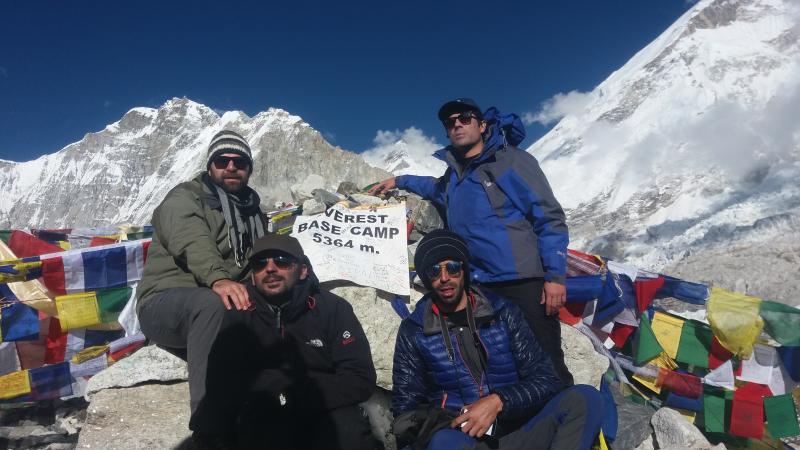

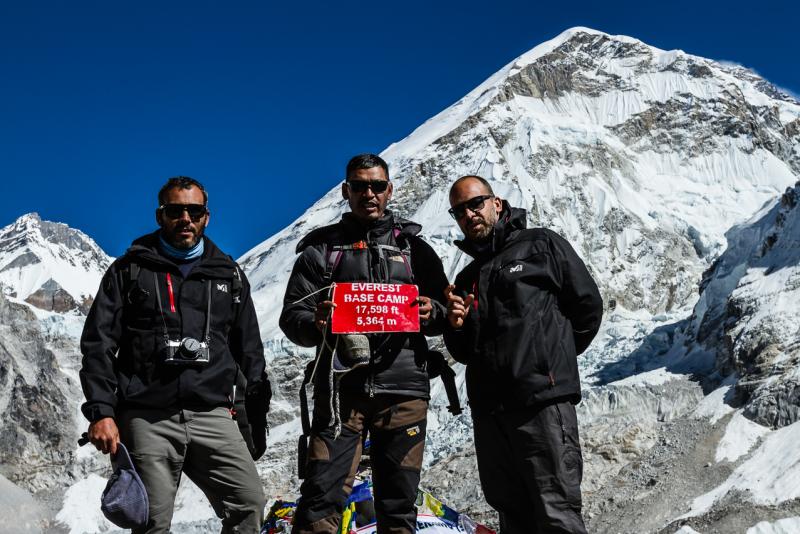
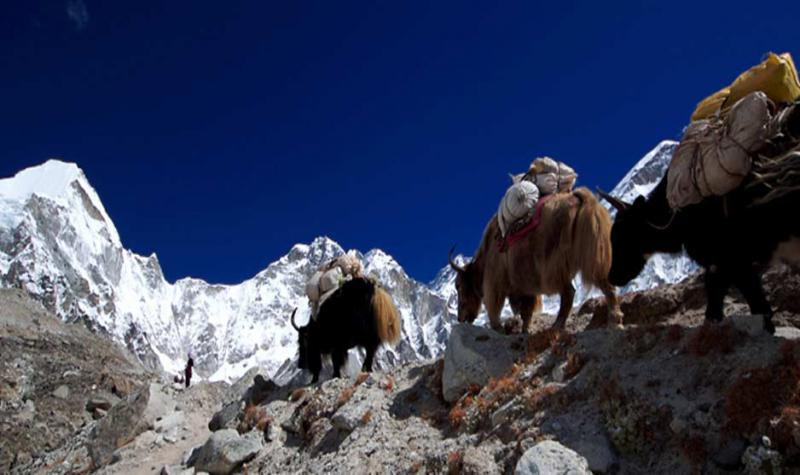
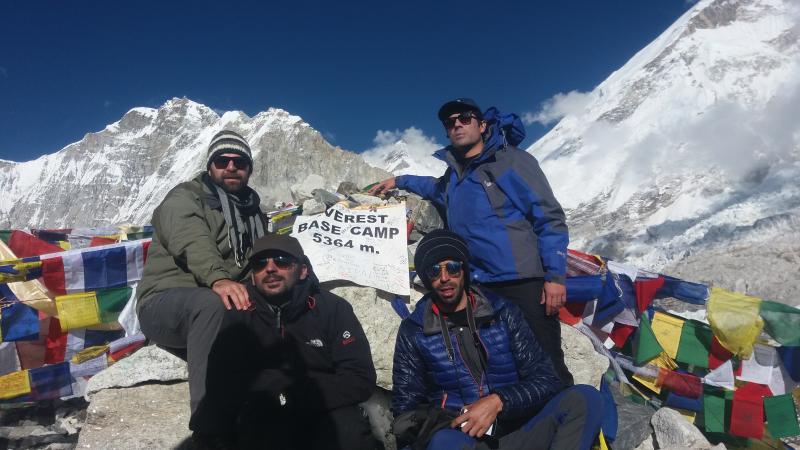




 USD 1340
USD 1340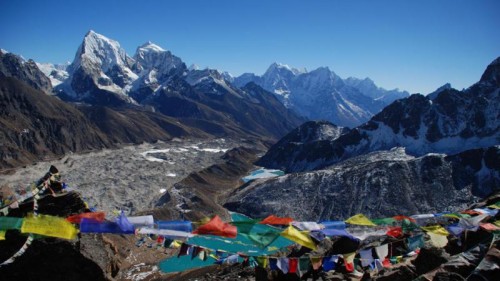
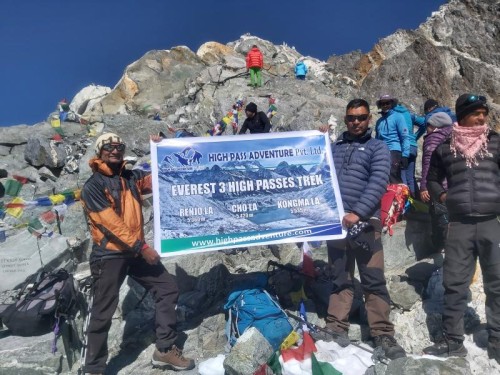
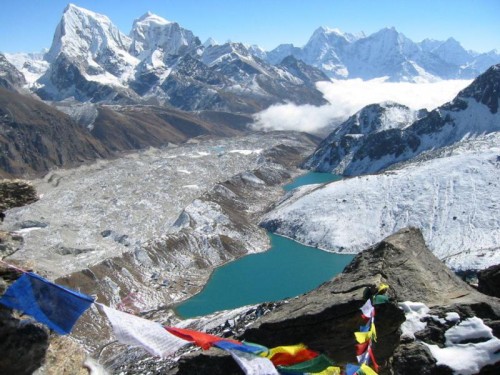
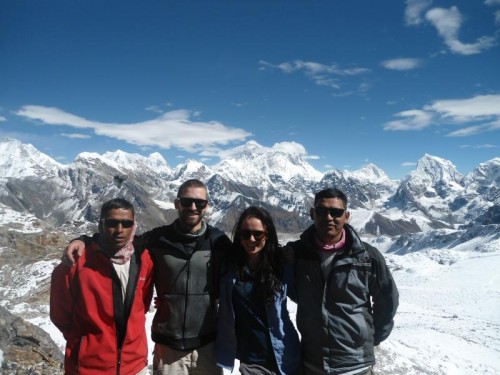

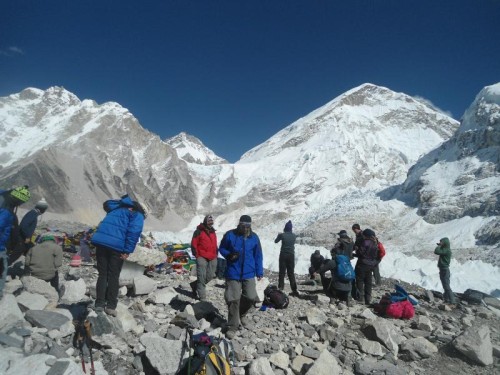
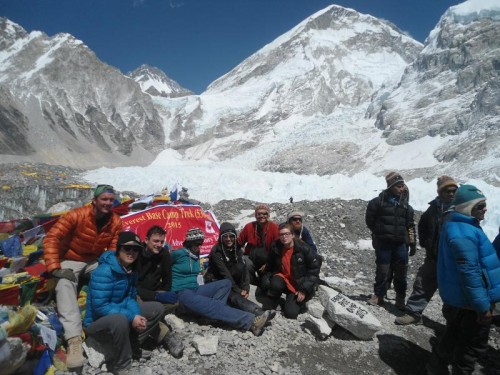

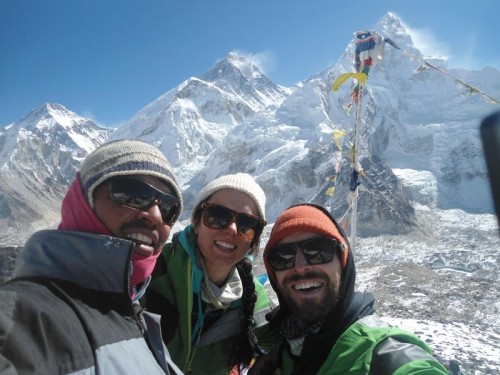
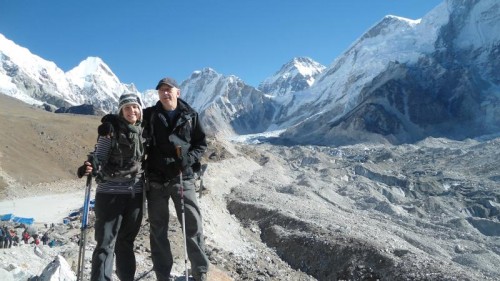
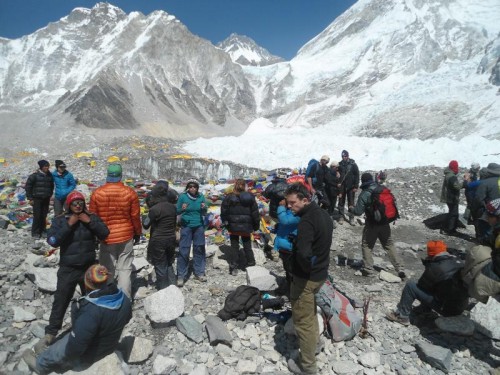
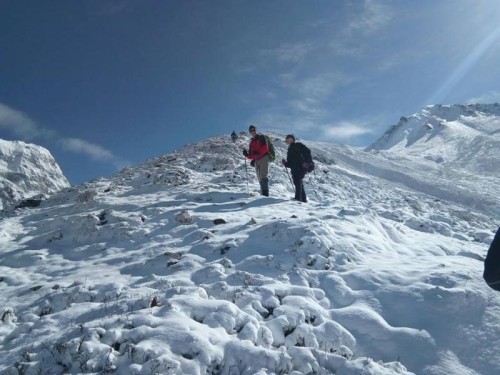

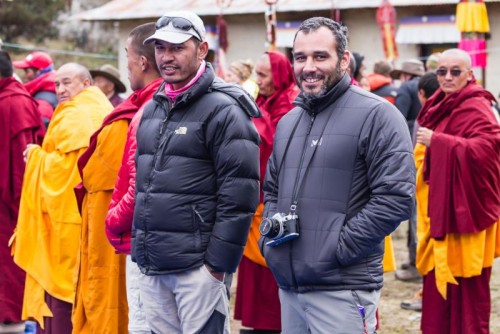
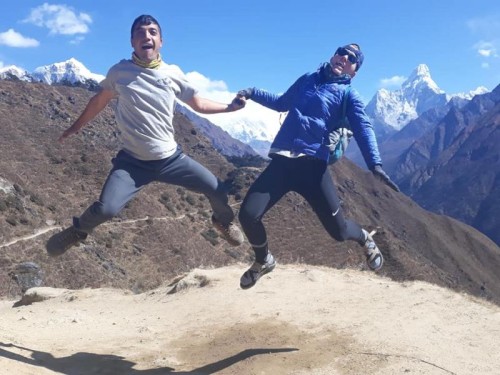

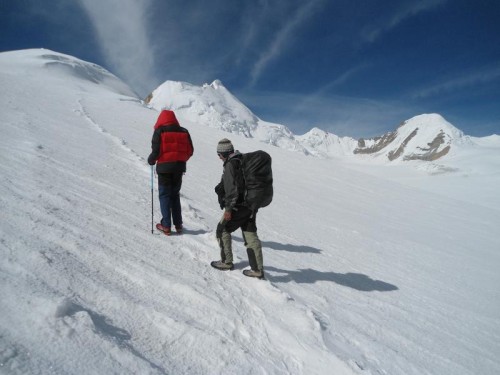
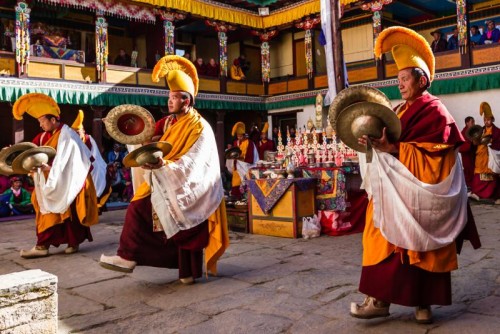
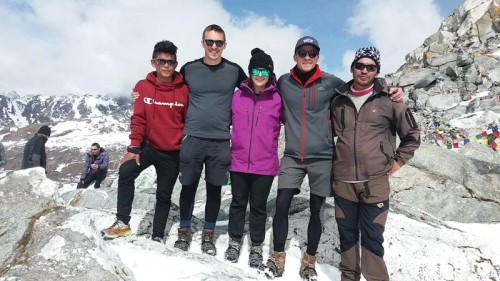

Roam
United States
Everest Base Camp Trek with Ganesh
13th June, 2023
I have did the Everest Base Camp Trek with High Pass Adventure agency and my guide was Ganesh. It was the first time that i get at this altitude and my guide was very careful with me. He listen all your problem if you have it and he can adapt in function of you. We have did the Everest base camp trek in 9 days only because i'm felt good. In plus the guide and the agency are very friendly with you so it's very nice To do the trek in a good atmosphere. If you want to do one trek in Nepal i recommend this agency. I Will never forget this experience it was Perfect.
Fernanda Ribeiro
Brazil
Great Knowledgeable Guide
13th June, 2023
In 2014 Purna was our guide to the Everest Base Camp. Purna has great knowledge about the area and we felt very safe during the trekking. He provided excellent support before the trek in Kathmandu, checking if we had everything we needed and also helped us hiring the necessary equipment.
Wei leng
Australia
Unforgettable trek in Everest Base Camp
13th June, 2023
High Pass Adventure Is the Great trekking company in Nepal. I booked with them Everest base camp trek and did this trek 3rd march to 15th march 2017. guide was very experienced and professional, yet is like a big brother taking good care of us throughout the whole trek. I fully recommended to this company and his team.
Fernanda Ribeiro
Brazil
Great Knowledgeable Guide!!!
16th July, 2023
In 2014, Purna was our guide to the Everest Base Camp. Purna had great knowledge about the area and we felt very safe during the trekking. He provided excellent support before the trek in Kathmandu, checking if we had everything we needed and also helped us hire the necessary equipment. During the trek Purna constantly checked our health to make sure we were able to arrive safely at the base camp. He also speaks good English, so we didn't have communication problems during the Everest Base Camp Trekking. Our vacation went really well and without any troubles. Purna is very friendly and we felt like we were trekking with a good friend.